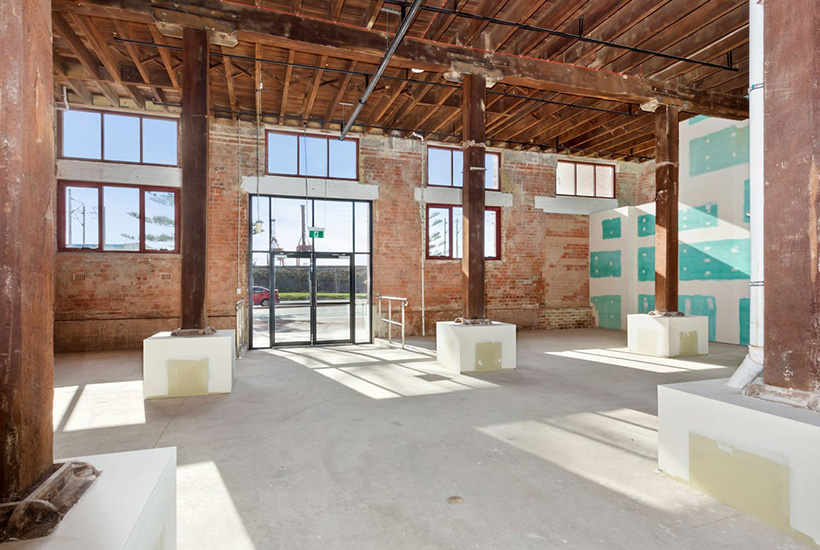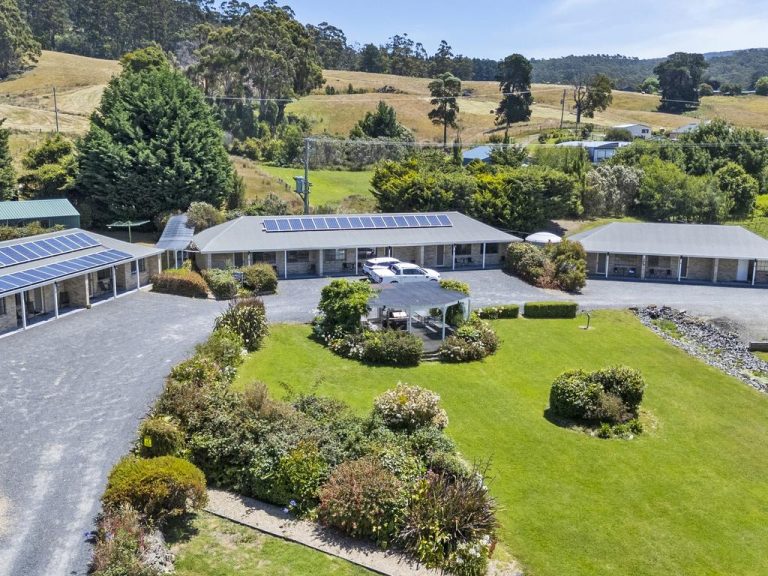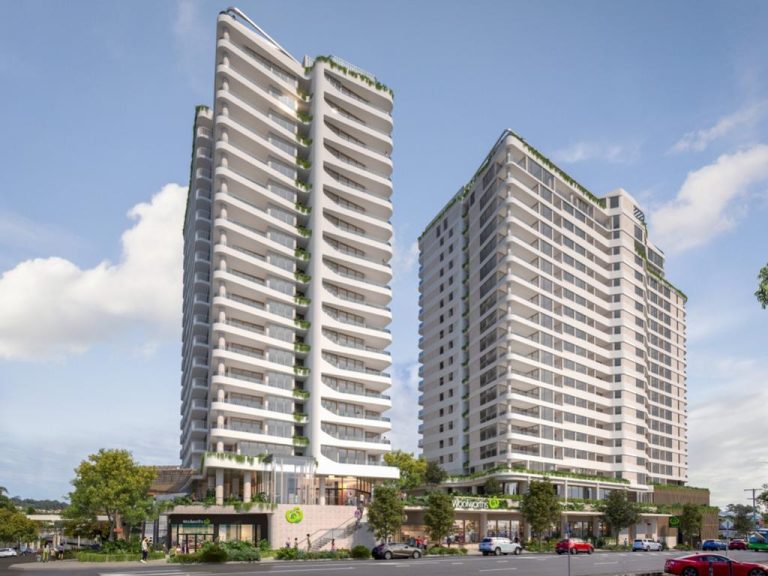Heritage wool store a chance for unique commercial creation in Fremantle

Once the nerve centre of Fremantle’s wool industry, this landmark heritage warehouse provides a blank commercial canvas and opportunity to create the next chapter of history.
Redeveloped by M/Group as Heirloom by Match in 2016, the former Dalgety Wool Store has been transformed into a New York-style industrial warehouse with 183 completed residential apartments and a dual-use commercial space, which has been listed for sale at $1.6 million.
The commercial site, which has been pitched as a café, restaurant or wine bar, offers 260sqm on the ground, with a soaring six metre ceiling height creating potential for additional floor space with a creative mezzanine or extra floor.

The building was originally part of a group of wool stores. Picture: realcommercial.com.au/for-sale
Largely unused for two decades, the Dalgety Wool Store has stood as a significant icon in the port city’s streetscape for almost 100 years.
It was originally part of a group of wool stores that occupied the entire street block and is now the only remaining one adjacent Fremantle Harbour.
Monumental in scale and form, the property was built in 1923 to cater for WA’s burgeoning wool industry from the end of World War I until the late 20th century, and was commandeered by the US Navy 7th Fleet as part of the combined allied World War II effort.
M/Group director Lloyd Clark said the $130 million Heirloom redevelopment had leveraged the existing structure to create a unique warehouse conversion.
Mr Clark said while the listing at 184/51 Beach Street had been positioned as a commercial enterprise, the dual zoning also fostered the prospect of a residential conversion.
“This particular listing…has created interest around the endless possibilities for a custom fit-out whilst designed around the exposed feature heritage red-brick, the 100-year-old jarrah columns and the exposed timber ceiling,” Mr Clark said.
“The space boasting 100 years of genuine Fremantle history lends itself to use as a café, restaurant, gallery, wine-bar or even a funky office. As the space is a shell, a complete custom fit out is available for the buyer.”
Mr Clark said the redevelopment paid homage to the building’s history.
“It was a goal to retain as many of the heritage elements as possible throughout the building and this was achieved by keeping or re-using over 85% of the original heritage fabric,” he said.
“New York-style conversions have become popular in recent years especially when considering living and/or working in a genuine warehouse environment, a limited prospect in Australia when compared to overseas.
“Developers had previously been hesitant to touch historic fabric due to the risks and unforeseen costs compared to the low cost, high profit ‘cookie-cutter’ buildings that were materialising across the city.”
Design experts say heritage renewals have long been popular for businesses and commercial enterprises, but required an astute architect with foresight and respect for the history of the property.
Nedlands architect Suzanne Hunt said there was a sense of romanticism associated with refurbishing historical buildings, despite the obvious constraints of working within heritage protections.
“There’s a romance about it,” Ms Hunt said. “People just love heritage buildings.
“If you go into a heritage building that has been refurbished well by an architect, you have this wonderful feeling of history. There is this wonderful layering of history, the old and the new, and I think that gives a lot of opportunities for different types of design that has more of a depth of design in it.”
“Heritage buildings give character and it doesn’t matter what purpose or business you’re putting in there, you’ve got this wonderful sense that the building is old, it has its own history and you’re just making more history.”
Ms Hunt said refurbishing heritage buildings was possible while remaining cognisant of the heritage listing and ensuring respect for the old fabric.
“If you’re putting a refurb or buying a heritage building, there’s a fallacy that you can’t do anything. That’s actually not true,” she said.
“Good heritage design is saying we’re going to respect the old building and we’re going to put something contemporary…If you understand the history of the building, you can reinterpret that history in a contemporary way through your design.”







